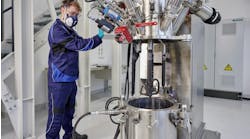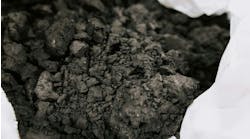As electric vehicle (EV) demand rises, chemical manufacturers are expanding their battery-manufacturing capabilities, providing both organic-liquid electrolytes and solid-state electrolytes (SSEs). The electrolytes are critical, for example, as they impact the battery’s power, lifetime, speed of charging and cost. Before proceeding, however, it's essential to acknowledge that there are no universal electrolytes.
Typical electrolytes use lithium hexafluorophosphate (LiPF6) salts as they remain the only candidate to be used due to their well-balanced properties, such as high ionic conductivity, good electrochemical stability and excellent wettability of the electrodes, such as ethylene carbonate (EC), dimethyl carbonate (DMC) and ethyl methyl carbonate (EMC) and then a small amount of additives, which are unique to each company.
While LiPF6 is commonly found in current electrolyte formulations, lithium Bis(fluorosulfonyl) imide (LiFSI) is becoming an increasingly popular alternative. In present applications, LiFSI serves as an additive in the electrolyte, with LiPF6 remaining the primary lithium salt. However, according to various suppliers, a small amount of LiFSI can improve low-temperature performance, the over lifecycle and storage stability of the electrolyte.
Electrolyte Manufacturing: Innovations and Challenges
As previously mentioned, it’s important to reiterate that there are no universal electrolytes. Each has advantages and disadvantages.
For instance, liquid electrolytes pose potential safety issues, such as high flammability, poor thermal stability and leakage. During cell manufacturing, for instance, operators must fill each cell with the electrolyte, seal it, conduct pressure tests and package it. To tackle these safety concerns and streamline numerous operational steps, researchers are actively developing alternatives using SSEs.
SSEs typically fall into three categories: solid polymer electrolytes (SPEs), inorganic solid electrolytes (ISEs) and composite solid electrolytes (CSEs). SSEs have shown several advantages compared to organic liquid electrolytes, such as being non-flammable, exhibiting high-temperature stability, and preventing the combustion or explosion associated with organic liquid electrolytes through non-volatilization. There is a further type of SSE which is a quasi-solid-state design. This design allows for room-temperature operation, saving energy and higher energy density for more efficient battery operation.
Finally, new research is in the field of liquefied gas electrolytes which can operate at very low temperatures down to – 60 degrees C.
For the liquid electrolytes, impurities, even at the ppm level, can impact the cell’s performance in an EV. The quality level of these electrolytes can exceed pharmaceutical quality and must undergo the same type of qualifications before use. Depending upon the flow rates and the specific process conditions, such as percent solids or particle size distribution, liquid electrolytes require the installation of absolute-rated cartridge filtration of 0.45 micron to 1-micron units.
For SPEs, there are different processes, such as powder-based processing, wet chemical processing and high-viscosity processing. For powder-based processing, dry milling at a high speed is necessary to prepare well-mixed fine powders. For wet chemical processing, solid particles are dispersed or blended with a solvent to obtain a suspension with a target viscosity. High-viscosity processing requires preparation of a highly viscous solvent-free paste consisting of polymers at elevated temperature prior to extrusion to form the SPEs.
Chemical Industry Primed for Growth
New alternatives for EV batteries are quickly emerging in the race to meet industry demand. For instance, I just heard about a rubber-based organic polymer that works well for lithium-ion transport and improved mechanical stability. At a recent conference, I attended a presentation on solid or quasi-solid electrolytes that exhibited high-performance characteristics at ambient temperatures to address safety concerns.
I also attended a session on a liquefied-gas electrolyte. The chemical industry is poised to play a central role in meeting these demands with its research and development knowledge and experience in material production and operations.
There are lithium-ion, sodium ion, super-capacitor and the “next generation” battery. Each of these designs can use high energy cells, high voltage cells, high power cells and operate at high to low temperatures. We're steadily moving toward nearly as many options as the 170,000 ways Starbucks offers to customize your favorite beverage. While that may be a slight exaggeration, it's not unreasonable to anticipate further expansion and innovation within the industry.
In fact, the chemical industry is primed for such growth with a wealth of expertise and capabilities to manage various adaptable process operations.



